
Hang together, hang tough.
In the meat industry, challenges are the norm and not the exception. Our definition of “business as usual” likely would rattle many in other industries, but it has contributed to our collective strength. And that strength has helped to make our industry the envy of the world. Here in the United States, we produce food that is not only safe and plentiful, but more affordable—by a large margin—than meat and poultry in any other nation in the world.
Our toughness will be an asset this year as we face some challenging times. No industry is regulated like the meat and poultry industry, with continuous oversight of our plants; yet in Washington today, the government is increasingly inclined to “pile on” with even more regulations.
AMI’s Executive Committee this year voted again to make food safety AMI’s No. 1 priority. This intense focus on food safety for the last 15 years helped contribute toward a national achievement: meeting the Healthy People 2010 goal to reduce E. coli O157:H7 infections to less than 1 case per 100,000 people.
While we briefly celebrated, our Foundation maintained its focus on identifying and funding research to reduce and ultimately eliminate pathogens. Unfortunately, as we look to science to solve problems, USDA appears poised to take actions on non-O157 STECs. On the table is a possible classification of six additional strains as adulterants in raw ground beef. Although some trial attorneys clamor for the move, we are actively communicating to USDA the steps the department should take that will make a difference in a way that bureaucratic bans cannot.
Specifically, this summer, AMI sent an eight-page letter to USDA communicating eight steps that should be taken to address the challenges posed by these pathogens, including conducting a risk assessment and a baseline survey and developing new interventions. We also pointed out that existing interventions for E. coli O157:H7 are effective against all strains of E. coli. Trying to achieve through bureaucratic measures what science simply will not permit consumes resources that would be better spent on other food-safety measures.
New regulations are in the works in other arenas as well. One of the most significant issues on the horizon is the USDA Grain Inspection, Packers and Stockyards Act (GIPSA) proposal to change how livestock and poultry are marketed in the U.S. The far-reaching proposal came in response to very specific language in the 2008 Farm Bill, but the proposal itself is like a regulatory fire-hose that will shake the industry to its core if finalized.
In the last two decades our industry has enjoyed enormous success by shifting away from a commodity approach to producing meat and instead, increasingly offering branded products. But brands cannot be built on unpredictable and inconsistent supplies. That’s why contracts and marketing agreements between packers and producers have become commonplace. They give the packer what he needs and offer the producer a predictable, steady source of income.
The GIPSA proposal, however, will lower the standard of evidence required for a producer to sue a packer if he believes that a competing producer who engaged in a contract or marketing agreement received an “undue preference.” This change will increase the risk associated with using marketing agreements and force packers to abandon such agreements and return to the spot market, where quality will suffer, or the change will lead to greater vertical integration. Making marketing agreements risky will help no one—with the possible exception of trial lawyers, who likely are drooling over the possibility of a final rule with the current language intact.
The rule’s comment deadline has been extended until November 22. AMI will submit detailed comments, but our efforts are only a small part of what is needed. Packers and producers across the country need to tell USDA in personal terms what effect this rule will have on their companies and their brands. AMI will soon provide an online option where industry members can convey in a compelling and personal way what impact this proposal will have on them, if finalized.
An election is on the horizon, and the ground beneath us in Washington and throughout the nation will no doubt shift.
But now is the time for our industry to stand firm with one another and to speak up to our lawmakers and our regulators about sweeping new policies. Meat industry business leaders need to remember that no one is more of an expert about your business than you are. Don’t be shy about sharing your views and your recommendations, because this is a year where we must hang together—and hang tough.
Food safety: Policies on the docket
On Sept. 28-29, 2010, the North American Meat Processors Association (NAMP), in conjunction with nearly a dozen other regulatory bodies and industry associations, hosted its “Prevention of E. coli O157:H7 for Further Processors” seminar in Chicago, giving food-safety minded processors yet another learning experience in their fight against pathogens and contaminants.
A variety of well-known, highly qualified speakers took the stage to give the industry updates on current methods of fighting E. coli, research in the works on new strategies and other information critical to their plants’ performance in defending against E. coli.
Dr. Dan Engeljohn, assistant administrator at USDA-FSIS Office of Policy and Program Development in Washington, D.C., was among those who presented to hundreds of attendees.
Engeljohn discussed the policy outlook on “What E. coli O157:H7 Means to Your Business Today,” sharing a bevy of next steps for FSIS that The National Provisioner believes can be helpful to you, the readers, in this, our State of the Industry Food Safety section.
This coming year, Engeljohn says, the agency will undertake a one-year beef carcass baseline study based on two inspection points: one sample would be taken immediately after hide removal, but prior to decontamination interventions and evisceration, while the second sample would be taking post-chill, after all decontamination interventions, prior to fabrication.
FSIS also expects to increase its vigilance against non-O157 STECs to improve ongoing process controls and look more broadly across all varieties of E. coli pathogens. The agency has been petitioned to pursue a test-and-hold policy, which means that uniquely at FSIS, the statute requires that inspectors not put a mark of inspection on product if they believe the product to be adulterated. Under a test-and-hold policy, Engeljohn explains, the rules could change that inspectors then could not put a mark of inspection on any product from which a test sample has been pulled by anyone.
Consumer groups have asked the agency to consider labeling product that is mechanically tenderized because of the need for the consumer to know that the product must be cooked differently, so the industry should be aware of that request that is on the table.
The agency announced last December a “grinding log” record-keeping initiative for the purpose of tracing back further ground-beef recalls that are often stopped at the retail level because records of the sources of the ground beef supplied to that operation have often been so bad that the agency cannot tell where the contaminant originated. This policy would make mandatory certain record-keeping information that would need to be kept to help identify whose product was used to produce the ground beef over the course of any given day.
Lastly, the agency is looking to improve the consistency of the quality and number of samples obtained during the collection of N60 samples.
Engeljohn applauded the industry for the good job it has done thus far in the fight against E. coli O157:H7 specifically, but did advise attendees that there was more work to be done to continue to suppress E. coli and many other pathogens.
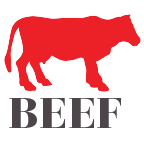
Beef: Consumers find value in lean beef
By Rick McCarty, Vice President – Issues Analysis and Strategy – NCBA
Consumers love beef, but too often feel they should eat it less because of nutrition and health concerns. However, consumers place strong value on lean beef and this provides an avenue to emphasize beef’s healthfulness and position it as a good protein source with significant body benefits.
Nutrition concerns represent the biggest barrier to increased beef consumption, but beef’s lean cuts can help overcome the “eat less red meat” message that consumers hear with increasing frequency.
Seventy percent of consumers say they are concerned about the fat and cholesterol in beef and feel there are healthier choices for protein, vitamins and minerals. However, lean protein is beef’s catalyst for improving nutrition perceptions and overcoming the fat concern barrier to consumption.
Previous research has shown that the word “lean” has significant power as a descriptor of beef. It helps overcome nutrition perception barriers and amplifies beef’s nutrient package. The objective of the current research was to understand consumer perceptions of, and preferences for, lean beef.
Two studies were conducted as part of a “perceptions of lean” project funded by The Beef Checkoff Program. The first was an online survey of 981 adult beef eaters to determine perceptions of lean beef. The second was an online survey of 886 adult beef eaters who were primary shoppers or shared equally in food purchasing decisions to analyze the importance of quality versus other attributes when purchasing beef and to determine consumer definitions of quality.
When asked how often they bought certain types of food, the highest percentage of consumers (60%) said they bought lean cuts of meat “every time” or “frequently.” In addition, consumers were asked how important it was to buy certain types of foods and, again, the highest percentage (69%) said buying lean cuts of meat was most important.
Strong majorities of consumers have favorable impressions of lean beef. While 72 percent think lean beef is more expensive, 79 percent say that lean beef is better for them than other kinds of beef. Consumers also value lean beef as lower in saturated fat (66%), having fewer calories (56%) and being lower in cholesterol (55%) than other beef. Survey respondents were asked how they determine leanness. Consumers rely on the percent lean/percent fat designation on ground beef labels to identify lean ground beef. When buying steaks, more than half look for the degree of marbling, look for lean on the label and look at the amount of fat trim around the edge of the cut.
Consumers also were asked to rank the importance of safety, price, quality and nutrition when they were buying ground beef and when they were buying steak. Quality was identified as the most important attribute for ground beef by 77 percent of consumers and by 81 percent of consumers for steak. Price was ranked second in importance followed by safety and nutrition.
Consumers who ranked quality either first or second in importance were asked, as an open-ended question, what distinguishes quality ground beef and steak from other ground beef and steak. The most often mentioned attributes of quality related to leanness and less fat — especially for ground beef, where 62 percent of respondents mentioned leanness as an indicator of quality. Freshness (23%) and appearance (18%) were the second and third ranked quality indicators for ground beef.
For steak, more than one-third (35%) of respondents mentioned leanness as an indicator of quality, followed by freshness (20%) and appearance (20%). U.S. Department of Agriculture certification/grade, type of cut and marbling each also were mentioned by 16 percent of respondents as attributes indicating quality steak.
Production methods (natural, hormone free, antibiotic free, organic, locally raised) were mentioned as a ground beef quality indicator by only 11 percent of respondents and by 10 percent of respondents as a steak quality attribute.
In conclusion, the research shows that consumers value lean beef as being better for them and lower in saturated fat, cholesterol and calories. Building on this data, the industry will provide consumers with clear information about which cuts are lean and work to make lean beef more accessible and identifiable to consumers both at retail and foodservice. In addition, there will be a focus on educating channel partners and manufacturers on leveraging the value consumers find in lean beef.
Beef Alternative Merchandising (BAM) is one way for retailers to capitalize on consumer demand for lean and portion-controlled steaks today. Taking a few extra steps in cutting and packaging middle meat steaks, such as the New York Strip, retailers can offer customers more lean options and drive sales of the coveted middle meat cuts. A retailer can provide convenience in all areas from the packaging, portion size, seasoning and placement of these cuts as a collection in their meat case. Helpful resources, such as cutting guides, instructional videos and point-of-sale materials are now available on BeefRetail.org.
Additionally, the checkoff-funded new-product development efforts have unveiled six new cuts from the beef round — the Sante Fe Cut; Round Petite Tender; San Antonio Steak; Tucson Cut; Braison Cut; and Merlot Cut — all of which qualify as “lean” or “extra lean” by USDA guidelines, and all have passed a multitude of taste and tenderness tests. During the last decade, the beef industry has gone from representing six cuts that qualified as “lean” to 35 with the inclusion of these latest additions.
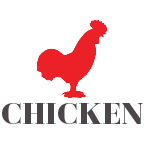
Chicken: New, greater challenges lurk in 2011
By Bill Roenigk, senior vice president and chief economist for The National Chicken Council
For many, if not most, chicken companies, 2010 has lived up to its earlier expectations as a year of being not too hot and not too cold — despite the foreseen and unforeseen developments. However, in 2011, Miss Goldilocks may be finding her porridge cooling but still a very palatable bowl of soup. And, could there be some flies in her soup?
Overcoming the foreseeable challenges that will confront the chicken industry in 2011 will be more difficult than the mix and intensity of the issues in 2010. While much of the focus was on disrupted export markets for chicken in 2010—especially the two major ones, Russia and China—there were a number of other bumps in the 2010 road, such as reduced consumer food dollar spending; continued uncertainty and volatility in grain, oilseed and energy markets; tightened food-safety and animal-welfare standards; and more problematic legislative/regulation burdens on business, to list a few.
Despite the steeper climb for producer/processors in the months ahead, there are, at the same time, good reasons to believe the challenges can be successfully managed so that profitability will continue for many, if not most, companies.
Troubled general economic conditions with a semi-jobless recovery seem most likely in 2011. Dampened consumer demand for animal protein, especially in much of the foodservice segment, will cut both ways for chicken in 2011. Chicken and the competing meats will continue to find a cautious consumer who is looking harder and trading around, not only among the various animal proteins but also among the various venues that are increasingly offering special values, shopping convenience and a widening choice of products.
From an operational standpoint, the greatest challenge on the industry’s horizon is the new competition and contraction rule proposed by USDA in mid-2010 and likely to be published in a final form in mid-2011. USDA’s Grain Inspection and Packers and Stockyards Administration (GIPSA) has proposed a rule that significantly and negatively changes the contractual relationship between chicken companies and their contract growers. If it is finalized and implemented in 2011, it will cause major damage to the chicken industry, perhaps the most since vertical integration became the business performance model of efficiency more than 40 years ago. Despite very many and valid arguments that the proposed rule should be withdrawn and re-written as Congress directed, it is most likely the final rule, when published in mid-2011, will be very much like the proposed version. The fallout from such a regulation will be economically harmful to producers and consumer alike.
While other meats will be basically standing still or trimming production in 2011, chicken production will be increasing measurably more in 2011 than the 2.4 percent increase experienced in 2010. A somewhat constrained size of the hatchery supply flock resulted in self-imposed discipline in 2010 so that the rate of increase of production was held to about one-half the long-term growth rate for chicken marketings. As the supply of broiler hatching eggs edges upward in 2011, the question of continued profitability will become more apparent for the industry in general.
Will the holding pattern for the production of competing meats provide adequate opportunities for chicken to successfully gain share of stomach? Will the increasing tightness of supply and likely increase in volatility in the grain and oilseed markets cause most, if not all, producers in the animal agriculture sector to press the “pause” button when deciding on their eventual production plans for 2011 and beyond?
Why are competing meats reducing or essentially maintaining current production levels in 2011, when the chicken industry is optimistically ratcheting up output in 2011?
There are a number of varying reasons why competing meats find their situation and outlook to be one of a “holding pattern.” However, the simple answer for the chicken industry is that basic economics still work in the chicken world.
That is, if a company or industry generates sufficient net income for a long enough period of time, producers react to that market signal. When consumers demand more chicken and are willing to continue to pay a favorable price for chicken products, companies invest in more output.
Consumers will benefit from this reaction in 2011 and so will, perhaps, many chicken companies.
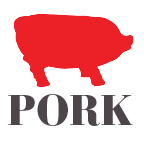
Pork: A return to sanity ... or at least profitability
By John R. Green, director of strategic marketing, National Pork Board
The beginning of 2010 brought something most pork producers had not seen in a very long time: PROFITS. It had been more than 30 months since many pork producers had been able to sell their hogs without thinking just how much it was going to cost them.
To review, beginning in the fall of 2007 with an increase in corn and soybeans prices—the two main feed ingredients of a pig’s diet—the industry broke a long string of profitable months and started an almost three-year run through which costs exceeded revenues. Adding fuel to the fire was a slowdown in the world economy and the deepest recession the U.S. had seen in decades, causing consumers around the world to reduce spending.
The return to profitability is the result of the industry rationalizing supply, along with the increase in sales in both the domestic and international markets. The pork industry is now 8 to 10 percent smaller than it was in late 2007, when measured by the number of pigs marketed annually. The current U.S. sow herd is the smallest it has been in more than four decades, meaning fewer sows available to produce market hogs. The prolonged downturn also has absorbed a great deal of capital, making the prospects of future expansion more difficult, but not insurmountable.
It was a difficult year for retail fresh meat sales, but pork was a bright spot. The retail market saw aggressive merchandising of many pork items, leading to a 9 percent increase in total pounds sold, and a 3 percent increase in total dollar sales. Ribs led the way, showing significant increases in the first three quarters of the year before leveling off in the fourth quarter. In the first quarter of 2009, rib sales were up almost 25 percent in volume and 18 percent in total value, proving once again Americans crave the unique and versatile flavor pork offers.
The international market for pork and pork products is a valuable and important destination for U.S. pork, accounting for about 18 percent of total production in 2009. Pork exports are expected to exceed 20 percent of production in 2010, due to an increase in sales and a 3 to 5 percent reduction in total pork supply versus 2009. Consumers around the world recognize the tremendous value of safe, fresh and wholesome, U.S.-produced pork.
The challenges presented to the U.S. pork industry have facilitated a restructuring of the industry that has made it more efficient and financially stronger. The industry is now positioned to respond to the needs of U.S. consumers and the growing world demand for quality U.S.-produced pork.
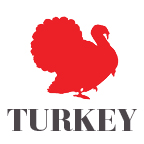
Turkey: Climbing back, at a slow rate
By Joel Brandenberger, president of the National Turkey Federation
The industry suffered significantly in 2008 and 2009 from the twin blows of increased input costs (particularly feed) and the recession, which put a major damper on demand. The industry has worked to adjust to these new economic realities, demand is returning to more traditional patterns and there has been some relief—for now—in input costs. This is a potent combination for improving margins for the entire meat and poultry sector.
These improved margins are likely to have some impact on turkey production, but the reaction could be somewhat muted by continued market uncertainties and the slow rate of recovery from the recession.
Exports
Exports comprise about 9.6 percent of total turkey production. In 2009, 535 million pounds of turkey were exported. The top four export markets for U.S. turkey meat were Mexico (264.8 million pounds), China (64.9 million pounds), Hong Kong (19.9 million pounds) and Russia (17.7 million pounds). Boneless dark meat (31.5%) is still the top turkey product being exported, which is important to the turkey industry’s economic health. Current estimates project 525 million pounds of turkey meat will be exported in 2010.
Issues
In an era of increased government activity, the turkey industry is keeping a careful watch on the most critical issues—antibiotics, the environment, food safety, GIPSA and renewable fuels—that could ultimately affect the poultry industry’s ability to conduct business.
Antibiotics in Food Animal Production
With some in Congress seeking to legislate—through the proposed Preservation of Antibiotics for Medical Treatment Act and other bills—the withdrawal of certain antibiotics from use in food-producing animals, the turkey industry believes FDA should take the lead in developing a review process. Although FDA has not released the details of how its proposed review of antibiotics would work, initial indications (reinforced by NTF member meetings with FDA) are that it could be the type of science-based, risk-based process that will increase the chances that any change in animal antibiotic use has a demonstrable benefit to public health.
NTF members have conveyed their support for expanding the National Antibiotic Resistance Monitoring System (NARMS), coordinating efforts with HHS and USDA to reduce the risk of pathogens, and asking Congress to increase research funding.
Environmental Challenges
The turkey industry is committed to sound environmental stewardship and shares a commitment with the entire poultry industry to minimize the environmental impact of poultry production. The EPA has certainly been targeting the poultry industry with several major environmental policies that will affect the industry and drastically increase the regulatory requirements for poultry farmers and processors. The three main areas of concern for the industry are the Chesapeake Bay Water Regulations; the Concentrated Animal Feeding Operation (CAFO) Rule, Lawsuit Settlement and Guidance; and the Greenhouse Gas Emissions Regulations.
These regulations could collectively impose severe economic harm on the turkey industry without achieving meaningful environmental benefits. As a result, NTF members have urged Congress to conduct proper and thorough oversight of EPA initiatives to allow appropriate opportunities for economic recovery and to continue advances in environmental management.
The industry saw some response from the House Agriculture Committee when it passed legislation that would provide a more reasonable, balanced approached to regulating the Chesapeake Bay. There’s no doubt that the industry has a long way to go, but these sorts of steps are important in ensuring that science and common sense are part of the process.
Food Safety
Congress is considering food-safety legislation that reforms FDA’s system of inspection (FDA does not inspect poultry or meat products).
The turkey industry believes any policy changes should demonstrably strengthen the country’s food-safety system and use sound science to take a risk-based approach that is adequately funded and structured. NTF believes that food-safety proposals should not impose unnecessary costs or burdensome requirements on industry without a measurable public health outcome.
As an industry, producers and processors are committed to producing safe, nutritious, affordable products for Americans of all income levels and for consumers around the world.
GIPSA Rule
The proposed livestock and marketing rule from USDA’s Grain Inspection, Packers and Stockyards Administration (GIPSA) is so immense that it would have a significant impact on poultry contracting, growers and processors. We applaud Congress for forcing GIPSA to grant a 90-day extension on the comment period. Unfortunately, with the comment period still open, GIPSA issued “Farm Bill Regulations – Misconceptions and Explanations.” This only added more confusion for growers and processors. NTF believes GIPSA should withdraw the proposed rule and re-propose a rule that complies with Congress’ original intent.
Renewable Fuels
Current U.S. renewable fuels policies have caused serious harm to the U.S. turkey industry and without reform will continue to do so for the foreseeable future. The turkey industry understands and supports the need to develop domestic sources of energy, but an adequate feed supply is a crucial priority. NTF supports elimination or significant reform of the ethanol tax credit and the ethanol import tariff. NTF also strongly encourages a safety net be put in place to ensure an adequate feed supply in the event of a significant crop shortfall. Food and energy should never be forced by government mandates to compete with each other for key inputs. Meanwhile, a strong commitment from the federal government to continue investing in alternative feedstocks will help protect consumers and producers from the effects of over reliance on corn-based ethanol.
Upgrade It!
NTF gave the American diet an “upgrade” this year with the launch of its new online tool—the Meal Upgrade Calculator. Developed in collaboration with Shape Up America!, the healthy weight campaign spearheaded by former U.S. Surgeon General C. Everett Koop, the calculator shows consumers how to “upgrade” favorite family meals by changing the type of meat and poultry, the sides and even the condiments so families can reap the benefits of consuming less fat and calories.
First, Shape Up America! identified 22 dishes that are easy to prepare, economical and, therefore, frequently served in American households. The researchers used USDA’s nutrition database to compare the amount of calories, total fat and saturated fat in the original meat recipe and then in the turkey-based version.
The research results found a savings of 6,408 calories a year or almost two pounds in excess weight if Americans substituted lean turkey for another protein one time a week at alternating meal occasions. Since many families consume similar menu items weekly, researchers also examined the annual health savings if Americans served a lower-fat turkey version of the same meat-based food items once a week. The research team chose turkey lasagna. By substituting lean ground turkey for ground beef and making other modifications to the recipe (light pasta sauce, lower-fat cheeses), the researchers found a savings per meal occasions of 239 calories and an annual savings of 12,428 calories or 3.6 pounds a year.
Going one step further, Shape Up America! calculated the average calorie savings when lean turkey is substituted on a daily basis. Using the savings from the 22 meals studied, the research team estimated that American can save an average of 108 calories a day by changing the source of the meat protein.
The Meal Upgrade Calculator is an important way to show Americans that switching to turkey is a positive and simple step consumers can take to lower the fat and calories in their diet while not making a tradeoff in taste and convenience.
The Meal Upgrade Calculator and Shape Up America! research can be accessed on NTF’s Web site, EatTurkey.com.

Veal: A long-range plan
By Beth Anne Mumford, American Veal Association, Beef Checkoff Joint VIM/VQA Committee
Veal consumers embrace veal’s taste and nutrition as a versatile protein source. While some consumers eat veal on a regular basis, research shows that, overall, consumers are not choosing it as much as they could be. To encourage people to choose veal more often, the veal sector has developed a comprehensive long-range plan focused on increasing veal use among the 41 percent of consumers who currently use it less than once a week.
This plan, to be implemented throughout the next three years, is designed to act as a roadmap to help veal leaders increase consumer demand — and ultimately profitability — through programs funded by The Beef Checkoff.
The plan’s centerpiece is the integrated Veal Go-To-Market strategy. This program is based on research and is designed to coordinate all Beef Checkoff-funded programs to increase demand and profitability for all segments of the veal industry.
The Go-To-Market strategy includes:
The plan is essential to the continued viability of the $1.5 billion U.S. veal industry. More than 1,000 farmers, processors and others contribute to the industry’s overall long-term success.
To view the plan, please visit www.veallongrangeplan.com.
A milestone for an industry ancestor
By George Melnykovich, senior advisor to the Food Processing Suppliers Association
As far as birthdays or anniversaries go, it’s not the signing of the Declaration of Independence or the remembrance of V-E Day, but, according to one Web site, its history “is literally a history of western civilization, and its innovation an engine of prosperity in the United States.” Are we talking about the invention of the printing press? The airplane? The computer? No, we are wishing a happy birthday to the can. Yes, the ubiquitous and oft-maligned food can is 200 years old this year.
While we don’t celebrate this birthday with a day off from work and school or even a television special commemorating the event, those of us in the food and beverage industry recognize the enormous debt of gratitude we owe to this invention. We are not being facetious when we suggest that the food can stands among the top 10 inventions of the past 200 years.
Food news these days is dominated by discussions of organic foods, locally sourced foods, and other safe and healthful options. Canned food has been relegated to the sidelines characterized, unfairly most times, as the not-so-healthy option. And, while the facings of canned food items on the supermarket shelves may have diminished somewhat in recent years, the can is very much alive and well.
According to the Can Manufacturers Institute, more than 1,500 items come in steel cans. And, Americans continue to use more than 100 million steel cans every day. (See Cancentral.com the CMI official Web site). The history of the food can is literally the history of the food industry in this country. Its milestones mark important developments in corporate history as well as the history of various trade associations that serve the food industry. By following the trajectory of the food can, we can observe the simultaneous changes that have characterized one of the greatest industries in the history of civilization, the American food industry. Let us examine some of these milestones.
The food can owes its origins to two individuals: Nicolas Appert, who developed the process of preserving food by sterilization in 1809 and Peter Durand who received a patent in England for a food container made of tin-plated iron. In 1818, Durand brought his invention, the tin-plate can, to the United States in 1818. One of the first food companies to can food was developed the next year in New York by Thomas Kensett and Ezra Daggett. So, in less than 10 years from its invention, the food can spawned an industry. We highly recommend the reader visit cancentral.com for a complete visual history of the can.
By the early 1900s the canned food industry led to the creation of several key trade groups. One was the National Canner’s Association (NCA) and the other was the Can Machinery Manufacturers Institute (CMMI). The latter group was the precursor to the Food Processing Machinery and Supplies Association which merged with the International Association of Food Industry Suppliers to form the current FPSA (Food Processing Suppliers Association).
Beginning in the early 1900s and continuing for almost the full 20th century, NCA and CMMI joined forces to produce a convention and an accompanying trade show, The Canner’s Show.
“The Canner’s Show and the NCA Convention were a family affair,” recalls one old timer reflecting on the convention and show of the 1940s and ’50s. “We’d get on a train in Ohio and party on our way to Chicago or Atlantic City. Food processors would meet with brokers and growers to plan their pack for the coming year. Then we’d go to the exhibit hall to see what was new and put in orders for equipment.”
As the food industry began to expand into other forms of processing and packaging food, the NCA became the National Food Processors Association and their suppliers followed in like fashion becoming the Food Processing Machinery and Supplies Association. The Canner’s Show was renamed the International Exposition for Food Processors (IEFP), but in truth for many years after the official name change it was still called The Canner’s Show.
Well into the late ’80s and ’90s, the canning industry still dominated the IEFP. Walking into McCormick Place in the winter of 1987 at the IEFP, you would be met by large island booths of can makers like American Can, Ball Corporation, Crown, Heekin Can, National Can and Northern Can, among many others. The can makers were surrounded by dozens of suppliers of steel and aluminum as well as the can-making machinery manufacturers. The 1987 IEFP, or Canner’s Show, was probably 75 percent or more oriented to the canned food and beverage industry.
The IEFP and FPM&SA of only 20 years ago stand in sharp contrast to their successors, PROCESS EXPO and FPSA. From the almost singular focus on the canned food industry, PROCESS EXPO is now a global supermarket of suppliers serving all facets of the food and beverage industry. And, of course, there is no NCA or NFPA meeting concurrently with the show. NFPA, reflecting the changes in the food industry, became the Food Products Association. Shortly after that change, FPA merged with Grocery Manufacturers Association (GMA) and the identity of the food processor as canner was forever gone. The hundreds of canneries that dotted the Eastern Shore, New York, and the Midwest have been reduced through mergers, acquisitions, and consolidations to a few score.
“There were about 200 canneries operating in Indiana during the ’60s,” says Phil Nelson of Purdue University. “Now there are five.”
So happy 200th birthday, dear and trusted food can. You’ve had a great and historic run. But this is not goodbye, because somehow we know that you’ll be around for another 100 years. And when we walk down the aisle of a supermarket 100 years from now, we can be sure we’ll find our most lasting and familiar symbol of canned food, a tin of Spam.
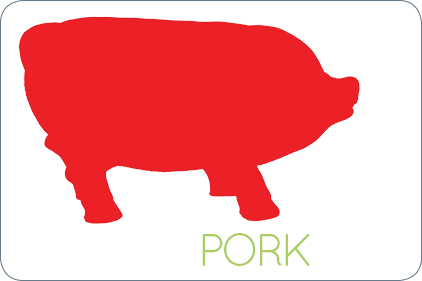


Report Abusive Comment